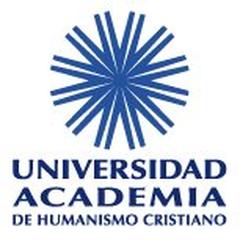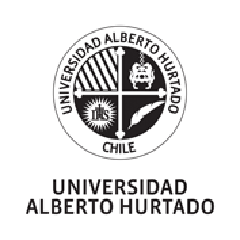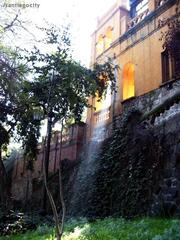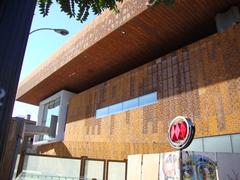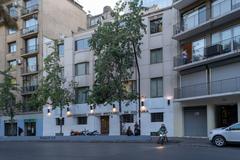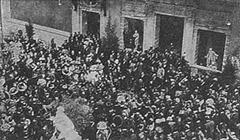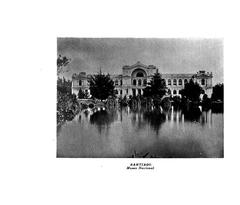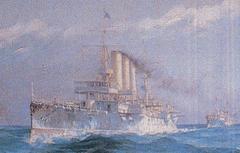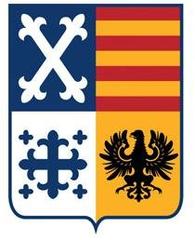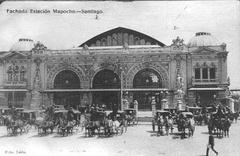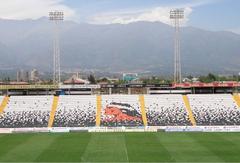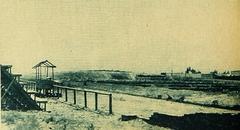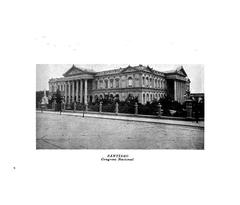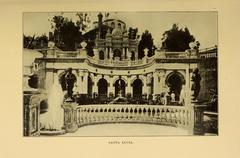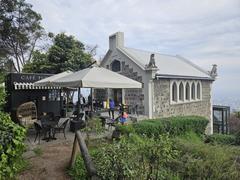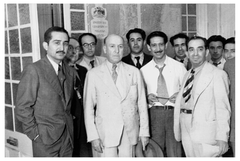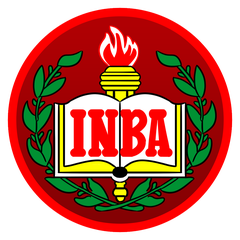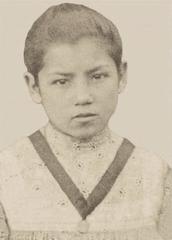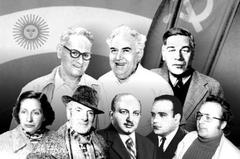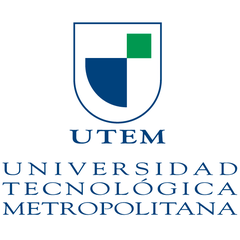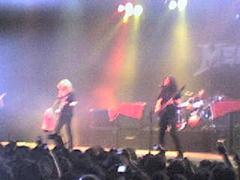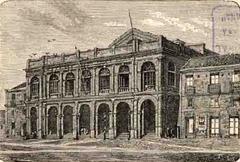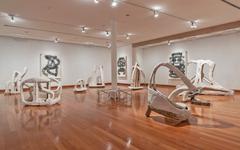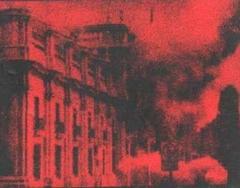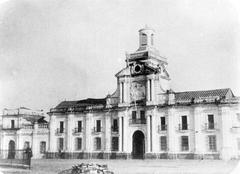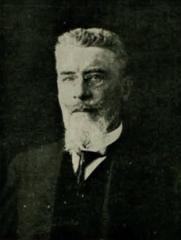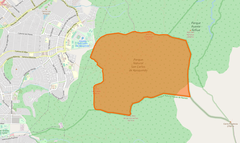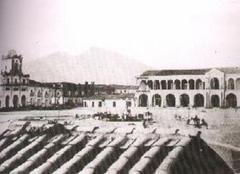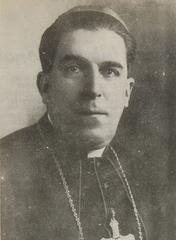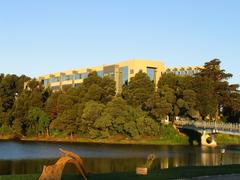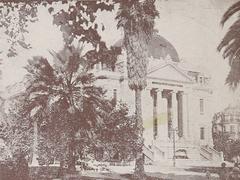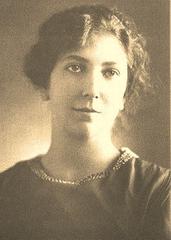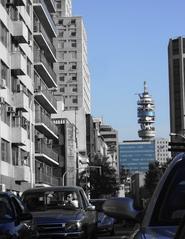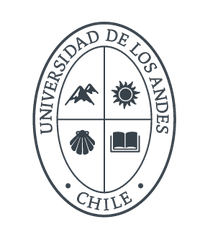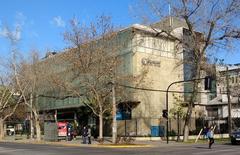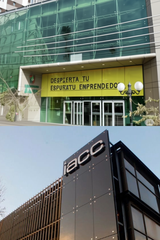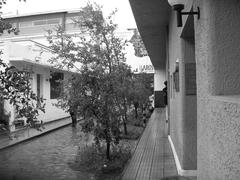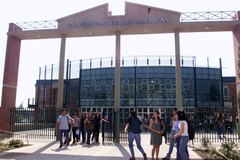Plaza de la Constitución, Santiago, Chile: Visiting Hours, Tickets, and Historical Sites Guide
Date: 04/07/2025
Introduction: History and Cultural Significance
Plaza de la Constitución is a central landmark in Santiago, Chile, located directly in front of the iconic Palacio de La Moneda, the Chilean presidential palace. As both a physical and symbolic heart of the nation, the plaza reflects Chile’s political evolution, architectural heritage, and vibrant civic life. Over the years, it has played host to momentous events—from peaceful civic gatherings to pivotal political upheavals—while also serving as a welcoming public space for reflection, commemoration, and cultural celebration.
This in-depth guide explores Plaza de la Constitución’s historical origins, architectural transformations, and ongoing role as a living monument to Chile’s journey toward democracy. It also provides all the practical details you need, from visiting hours and ticket information to accessibility, nearby attractions, travel tips, and guided tour options. Whether you are passionate about history, interested in Chilean architecture, or simply seeking a meaningful stop in Santiago, this guide will help you experience the plaza to the fullest.
For additional insights and the latest visitor resources, consult Santiago Turismo and Chile.travel.
Table of Contents
- Introduction: History and Cultural Significance
- Urban Origins and Architectural Evolution
- Political Transformations and Symbolism
- Monuments and Memorials
- Visiting Information: Hours, Tickets, Accessibility
- Key Attractions and Guided Tours
- Nearby Landmarks and Amenities
- Frequently Asked Questions (FAQs)
- Conclusion and Visitor Tips
- References
Urban Origins and Architectural Evolution
Plaza de la Constitución’s site was originally a dense urban block at the heart of Santiago’s governmental core. In the early 20th century, it housed ministries such as War and the Navy, and by the late 1920s, these gave way to the creation of a civic district under the vision of Austrian urban planner Karl Brunner. The development of the Ministry of Finance, Ministry of Foreign Affairs, Banco Central de Chile, and Ministry of Justice led to the clearing of the block north of La Moneda, and the first version of the plaza was inaugurated in 1935. However, it served as a parking lot for decades, limiting its civic value.
Significant transformation came after the events of 1973, when the military coup and subsequent bombing of La Moneda prompted a complete rethinking of the plaza’s role and design. From 1980 to 1984, architects Cristián Undurraga and Ana Luisa Devés led a postmodern redesign, introducing a layout of four triangular lawns converging at a central circle. Their design emphasized neoclassical symmetry, clear sightlines to La Moneda, and a dignified civic atmosphere, drawing on Italian Renaissance and French Baroque influences (Santiago Turismo).
Political Transformations and Symbolism
Plaza de la Constitución is inextricably linked to Chile’s political history. It was the epicenter of the 1973 military coup, when President Salvador Allende’s government was overthrown and La Moneda was bombed—a moment that left lasting physical and symbolic scars. The subsequent redesign of the plaza in the 1980s was part of an effort to restore civic pride and reinforce the area’s national significance.
The name “Plaza de la Constitución” itself pays tribute to Chile’s constitutional history, referencing the nation’s ten constitutions and its ongoing journey toward democracy (Conociendo Chile). Today, the plaza is a space for remembrance, reconciliation, and civic expression—hosting state ceremonies, political demonstrations, and cultural events that continue to shape Chile’s identity (MyWanderlust).
Monuments and Memorials
Throughout the plaza, visitors will find statues and memorials to key Chilean figures, each representing different chapters of the country’s history:
- Diego Portales: Architect of the 1833 Constitution, symbolizing the early republic.
- Jorge Alessandri Rodríguez: President (1958–1964), representing mid-20th-century governance.
- Eduardo Frei Montalva: President (1964–1970), a key figure in Chile’s modernization.
- Salvador Allende Gossens: President (1970–1973), whose statue near the northern end is a focal point for reflection on democratic aspirations and political struggles (Atlas Obscura).
- Pedro Aguirre Cerda: President (1938–1941), known for promoting public education.
Obelisk-like columns, fountains, and commemorative stones, including a marker for the influential Carrera family’s former residence, further enrich the civic memory embedded in the plaza. A towering Chilean flagpole in front of La Moneda symbolizes unity and national pride.
Visiting Information: Hours, Tickets, Accessibility
- Visiting Hours: Open 24 hours a day, year-round. The plaza is accessible at all times, but it is recommended to visit during daylight hours (6:00 AM–9:00 PM) for safety and better visibility.
- Tickets: Entry to Plaza de la Constitución is free. No ticket is required to access the plaza or view outdoor monuments.
- Accessibility: The plaza is fully wheelchair accessible, with paved pathways, ramps, and benches for comfort.
- Public Transport: The most convenient access is via Metro Line 1 (La Moneda station) and numerous bus routes. Taxis and ride-sharing services are also widely available (goaskalocal.com).
Key Attractions and Guided Tours
Palacio de La Moneda
The neoclassical Palacio de La Moneda dominates the southern edge of the plaza. Designed by Joaquín Toesca and completed in 1805, it serves as both the presidential palace and a symbol of Chilean statehood (Chile.travel). Guided tours of the palace are available by prior arrangement and provide a deeper understanding of its historical and political significance.
Centro Cultural La Moneda
Beneath the plaza’s southern end lies the Centro Cultural La Moneda, an underground cultural center that hosts art exhibitions, films, and public events, with a discreet glass pavilion entrance (Centro Cultural La Moneda). Opening hours are Tuesday to Sunday, 10:00 AM to 7:00 PM.
Change of the Guard Ceremony
The Changing of the Guard at La Moneda Palace is a ceremonial highlight, taking place every other day at 10:00 AM on weekdays and 11:00 AM on weekends. The event is free and draws both locals and tourists (Santiago Turismo).
Guided Tours
Official guided tours of the Civic District and La Moneda can be booked via Santiago Turismo or through local tour operators. These tours offer valuable context on the plaza’s history and architecture.
Nearby Landmarks and Amenities
Plaza de la Constitución is centrally located within Santiago’s Civic District and is surrounded by key institutions and attractions:
- Cerro Santa Lucía: Historic hill park with panoramic city views.
- National Museum of Fine Arts: Art collections spanning Chilean and international works.
- Plaza de Armas and Metropolitan Cathedral: Historical and religious landmarks within walking distance.
- Neighborhoods of Lastarria and Bellas Artes: Popular for culture, dining, and nightlife.
The area is well-served by cafes, restaurants, and shops. Public restrooms are available at the Centro Cultural La Moneda.
Frequently Asked Questions (FAQs)
Q: What are the opening hours of Plaza de la Constitución?
A: The plaza is open 24 hours a day, year-round. Visiting during daylight hours is recommended.
Q: Is there an entrance fee?
A: No, entry to the plaza is free. Guided tours or special exhibitions may require tickets.
Q: Are guided tours available?
A: Yes, guided tours can be arranged through official tourism channels or local operators.
Q: Is the plaza wheelchair accessible?
A: Yes, the plaza features smooth paving, ramps, and accessible routes.
Q: When is the Changing of the Guard ceremony?
A: Every other day, typically at 10:00 AM on weekdays and 11:00 AM on weekends.
Conclusion and Visitor Tips
Plaza de la Constitución is a must-visit site for anyone interested in Chile’s history, architecture, or civic culture. With its open layout, meaningful monuments, and central location, it offers a unique window into the country’s past and present. Attend the Changing of the Guard, explore the surrounding Civic District, and take advantage of guided tours for a deeper appreciation.
For up-to-date information, personalized travel tips, and interactive maps, download the Audiala app and follow our social media channels. Stay informed about upcoming events, temporary closures, and new exhibitions to make the most of your visit.
Further Reading and References
- Plaza de la Constitución – Santiago Turismo
- Things to Do in Santiago – MyWanderlust
- Plaza de la Constitución – Chile.travel
- Plaza de la Constitución – GreatChile
- Rough Guides: Santiago and Around
- Conociendo Chile – Plaza de la Constitución
- Centro Cultural La Moneda
- Change of the Guard at La Moneda Palace – Santiago Turismo
- Travel Guide to Santiago – GoAskALocal
- Salvador Allende Statue – Atlas Obscura
